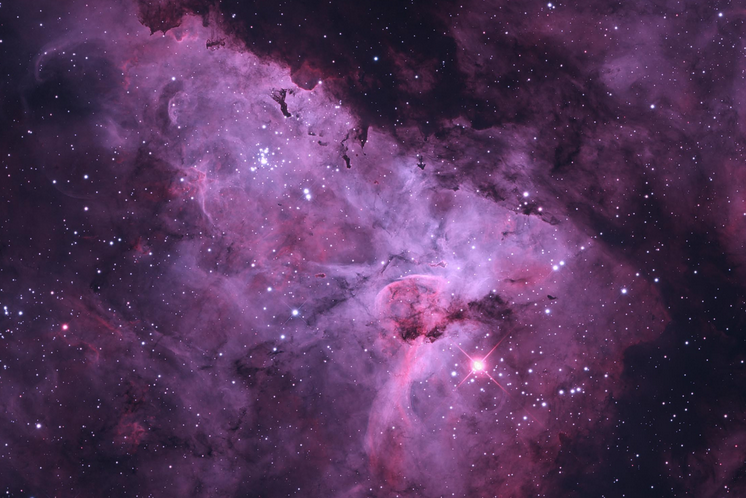

Given its size, close distance, and how often it is photographed, it would be easy to surmise that the Orion Molecular Cloud tops the list of the largest star forming regions in our galaxy. But, in fact, that distinction currently belongs to *the Carina Nebula: a stunning stellar nursery found approximately 7,500 light-years from Earth toward the southern constellation of (you probably guessed it) Carina.
Simply put, the Carina nebula dwarfs the Great Nebula of Orion—home to the Eagle Nebula, the Pillars of Creation and the Trapezium Cluster—by several magnitudes, though its most notable features—including the Keyhole and Homunculus Nebulae, Trumpler 16 and (a personal favorite) Mystic Mountain—are decidedly lesser-known.
And, of course, one can’t mention the Carina Nebula without talking about its most famous star—the huge, bright and very unstable supernova candidate, Eta Carinae.
This image of the nebula was taken by Terry Robison, and is up for the Astronomy Photograph of the Year award. See the other entries below(You can find a larger version of this here):
*Note: There are a few other regions believed to be larger than the Carina Nebula, but their distance and locations make it nearly impossible to confirm predictions.